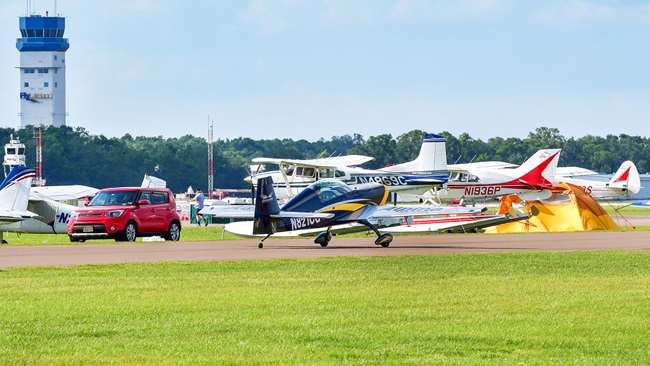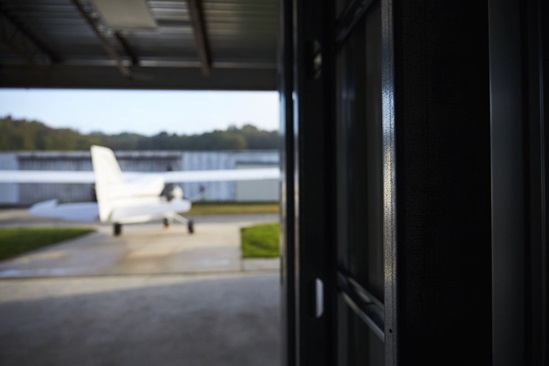Challenge accepted
Can you land at these airports? Yes! And you should

As you add hours and ratings, strange new airports no longer seem so strange. Yet the United States is privileged to offer a number of airports whose topography or layout (or both) make them among the most challenging airports from which to land or take off. Should you try? We say yes. These airports are accessible to any pilot. Many are gateways to weekend adventures once you get out of the airplane, too. With proper training and preparation, they will be awesome entries in your logbook, and they will be amazing chapters in your aviation life story. Add them to your bucket list of aviation adventures, and watch your confidence soar.
Lake County Airport (LXV), Leadville, Colorado
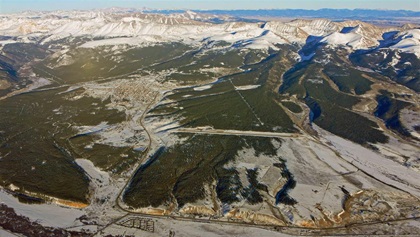 Density Altitude off the charts: At 9,934 feet msl, Lake County Airport (aka Leadville) is the highest public-use airport in the United States. Density altitude is not a performance theory here; it is a reality. Pilots must know how to account for the debilitating effects of high density altitude on single-engine piston aircraft, and a healthy dose of mountain flying education is important as well.
Density Altitude off the charts: At 9,934 feet msl, Lake County Airport (aka Leadville) is the highest public-use airport in the United States. Density altitude is not a performance theory here; it is a reality. Pilots must know how to account for the debilitating effects of high density altitude on single-engine piston aircraft, and a healthy dose of mountain flying education is important as well.
If you’re not comfortable landing at Leadville without some assistance, many flight schools in Colorado offer mountain flying instruction to get you well prepared. Once you do land at Leadville, you’ll be presented with a certificate to mark the occasion, and of course you’ll be able to say you’ve been there, done, that, and bought the T-shirt.
Why you should land there: Didn’t we mention “highest elevation public-use airport in the United States”?
How you can prepare: Mountain flying training, high density altitude operations training.
^^, ~~
George T. Lewis Airport (CDK), Cedar Key, Florida
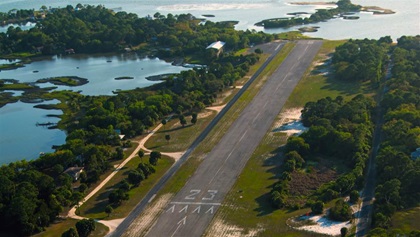 Plan your approach: Reviewer Richard W. put it best when he wrote this comment on AOPA’s Airport Directory Online: “Plan your approach well, as aircraft come in hot, land long or with tailwinds, and run off the end of the runway every year.” George T. Lewis Airport, or Cedar Key as everybody else calls it, has a 2,355-foot-long by 100-foot-wide runway. Editor at Large Dave Hirschman said the width throws off the sight picture as you land, and there are lots of skid marks to document where pilots locked up their brakes trying not to go off the end of the runway. Once you’ve landed and tied down, Cedar Key, an artists’ enclave, offers birding, boating, fishing, and of course abundant seafood in small, locally owned restaurants.
Plan your approach: Reviewer Richard W. put it best when he wrote this comment on AOPA’s Airport Directory Online: “Plan your approach well, as aircraft come in hot, land long or with tailwinds, and run off the end of the runway every year.” George T. Lewis Airport, or Cedar Key as everybody else calls it, has a 2,355-foot-long by 100-foot-wide runway. Editor at Large Dave Hirschman said the width throws off the sight picture as you land, and there are lots of skid marks to document where pilots locked up their brakes trying not to go off the end of the runway. Once you’ve landed and tied down, Cedar Key, an artists’ enclave, offers birding, boating, fishing, and of course abundant seafood in small, locally owned restaurants.
Why you should land there: Come on, do you really need an excuse to fly to an island in Florida?
How you can prepare: Know thy airplane. Practice short-field takeoffs and landings.
<o>, --
Telluride Regional Airport (TEX), Telluride, Colorado
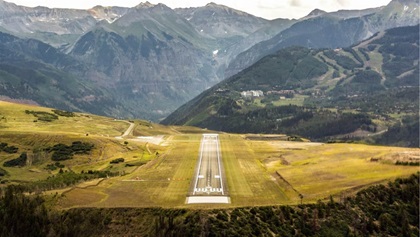 Watch those mountains: Like Leadville, Telluride is a high-elevation airport in Colorado. But that’s not the only challenge awaiting you when you touch down on its 7,011-foot-long runway. It’s surrounded on three sides by 12,000- to 14,000-foot-high mountains, so you’ll want to land on Runway 9 and depart on Runway 27 to avoid a dead-end canyon east of the airport. Telluride is a pricey ski destination, so don’t be surprised if your humble Cessna or Piper is sharing ramp space with some pretty expensive big iron. But that’s OK—their pilots put their pants on one leg at a time just like everyone else.
Watch those mountains: Like Leadville, Telluride is a high-elevation airport in Colorado. But that’s not the only challenge awaiting you when you touch down on its 7,011-foot-long runway. It’s surrounded on three sides by 12,000- to 14,000-foot-high mountains, so you’ll want to land on Runway 9 and depart on Runway 27 to avoid a dead-end canyon east of the airport. Telluride is a pricey ski destination, so don’t be surprised if your humble Cessna or Piper is sharing ramp space with some pretty expensive big iron. But that’s OK—their pilots put their pants on one leg at a time just like everyone else.
Why you should land there: For the view, and for the skiing.
How you can prepare: Mountain flying training, high density altitude operations training.
^^, ~~
Sedona Airport (SEZ), Sedona, Arizona
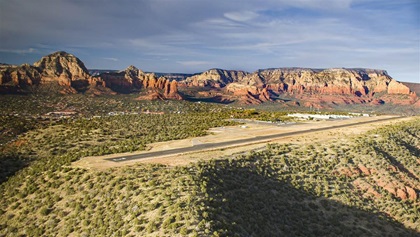 Most of us will never land on an actual aircraft carrier, but thankfully we have Sedona Airport as, perhaps, the next best thing. The airport sits atop a 500-foot-high mesa. The calm wind runway is 3 in, 21 out to take advantage of a 1.8 percent gradient. Steep drop-offs at either end of the 5,100-foot-long runway can create turbulence on the approach, so you’ll want to anticipate adding power short of the runway threshold. Upon departure, that drop-off might cause a quick intake of breath. But the view of the majestic Red Rocks surrounding the airport are more than worth it.
Most of us will never land on an actual aircraft carrier, but thankfully we have Sedona Airport as, perhaps, the next best thing. The airport sits atop a 500-foot-high mesa. The calm wind runway is 3 in, 21 out to take advantage of a 1.8 percent gradient. Steep drop-offs at either end of the 5,100-foot-long runway can create turbulence on the approach, so you’ll want to anticipate adding power short of the runway threshold. Upon departure, that drop-off might cause a quick intake of breath. But the view of the majestic Red Rocks surrounding the airport are more than worth it.
Why you should land there: Beautiful scenery and it’s like landing on an aircraft carrier.
How you can prepare: Mountain flying, high density altitude operations.
—, ~~
Catalina Airport (AVX), Catalina Island, California
 Airport in the sky: Catalina Airport was constructed by blasting the tops off two mountains and filling in the gap between them. The airport elevation is 1,602 feet, and all the island’s residents live at lower elevations. The 3,000-foot-long runway has steep drop-offs on either end, with cliffs that can be intimidating—but not for the pilot who has prepared for the approach. Catalina Island is about 22 nautical miles from the California coast. That’s enough overwater time to justify bringing a life jacket. Again, short-field landing technique should be your choice, because you don’t want to have to slam on the brakes too close to that drop-off. Once tied down, the whole of Catalina Island is available for you to explore, with its herd of buffalo, botanical gardens, and indigenous species of fox.
Airport in the sky: Catalina Airport was constructed by blasting the tops off two mountains and filling in the gap between them. The airport elevation is 1,602 feet, and all the island’s residents live at lower elevations. The 3,000-foot-long runway has steep drop-offs on either end, with cliffs that can be intimidating—but not for the pilot who has prepared for the approach. Catalina Island is about 22 nautical miles from the California coast. That’s enough overwater time to justify bringing a life jacket. Again, short-field landing technique should be your choice, because you don’t want to have to slam on the brakes too close to that drop-off. Once tied down, the whole of Catalina Island is available for you to explore, with its herd of buffalo, botanical gardens, and indigenous species of fox.
Why you should land there: It’s an island!
How you can prepare: Short-field landing practice, and watch your approaches in general. You don’t want to be too high on final. Watch the AOPA Air Safety Institute’s Beyond Proficient: Flying to Catalina Island for more tips.
—, --, <o>
Dwight Airport (DTG), Dwight, Illinois
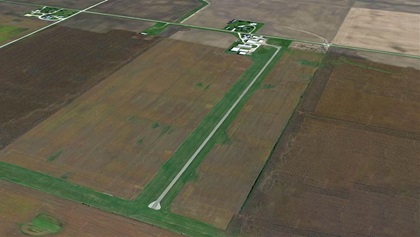 Watch your wing tips: So, you say 50 feet isn’t narrow? OK, we’ll see your 50 feet and raise you 21 feet, which is the width of Runway 9/27 at Dwight Airport. (The length is 2,364 feet, and there are nonstandard markings because the runway is so narrow). Runway 9/27 is paved; there’s also the turf Runway 18/36, 1,900 feet by 100 feet. So if you can make the numbers work for your airplane, you can practice both short- and soft-field takeoffs and landings here, and even short/soft takeoffs and landings—and when was the last time you were able to do that?
Watch your wing tips: So, you say 50 feet isn’t narrow? OK, we’ll see your 50 feet and raise you 21 feet, which is the width of Runway 9/27 at Dwight Airport. (The length is 2,364 feet, and there are nonstandard markings because the runway is so narrow). Runway 9/27 is paved; there’s also the turf Runway 18/36, 1,900 feet by 100 feet. So if you can make the numbers work for your airplane, you can practice both short- and soft-field takeoffs and landings here, and even short/soft takeoffs and landings—and when was the last time you were able to do that?
Why you should land there: Who wants to get complacent on 50-foot-wide runways?
How you can prepare: Short-field landing practice.
--,<o>
Goodspeed Airport (42B), East Haddam, Connecticut
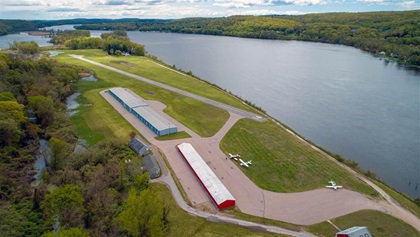 Music to your ears: East Coast pilots, do not fear; there are challenging airports in your airspace too. At Goodspeed Airport, the runway length is 2,120 feet by 50 feet—so on the short side, and narrow, which can throw off a pilot’s sight picture. Goodspeed is located in a small valley alongside the Connecticut River and might be tough to spot from the air. Once you’ve landed, plan to stick around for dinner and a live musical performance at the Goodspeed Opera House, a three-minute walk from the airport.
Music to your ears: East Coast pilots, do not fear; there are challenging airports in your airspace too. At Goodspeed Airport, the runway length is 2,120 feet by 50 feet—so on the short side, and narrow, which can throw off a pilot’s sight picture. Goodspeed is located in a small valley alongside the Connecticut River and might be tough to spot from the air. Once you’ve landed, plan to stick around for dinner and a live musical performance at the Goodspeed Opera House, a three-minute walk from the airport.
Why you should land there: Who wants to get complacent on 5,000-foot runways?
How you can prepare: Short-field landing practice.
--,<o>
Block Island Airport (BID), Block Island, Rhode Island
 Island near Long Island: East Coast pilots, here’s your island airport. It doesn’t sit up in the sky like Catalina, and if you fly from Long Island, New York, direct to Block Island it’s just nine nautical miles. Once you get there, Runway 10/28 is 2,502 feet by 100 feet. Once you land, Bethany’s Airport Diner is right there, or you can take a taxi into town for lunch or dinner. There’s a nature preserve just south of the airport, beaches for fishing or kayaking, lighthouses to see, and bicycles and mopeds to rent so that you can take it all in.
Island near Long Island: East Coast pilots, here’s your island airport. It doesn’t sit up in the sky like Catalina, and if you fly from Long Island, New York, direct to Block Island it’s just nine nautical miles. Once you get there, Runway 10/28 is 2,502 feet by 100 feet. Once you land, Bethany’s Airport Diner is right there, or you can take a taxi into town for lunch or dinner. There’s a nature preserve just south of the airport, beaches for fishing or kayaking, lighthouses to see, and bicycles and mopeds to rent so that you can take it all in.
Why you should land there: It’s an island!
How you can prepare: Short-field landing practice.
--
Check in at these airports using the Pilot Passport feature on the AOPA app!
What’s your challenging airport? Email [email protected]


